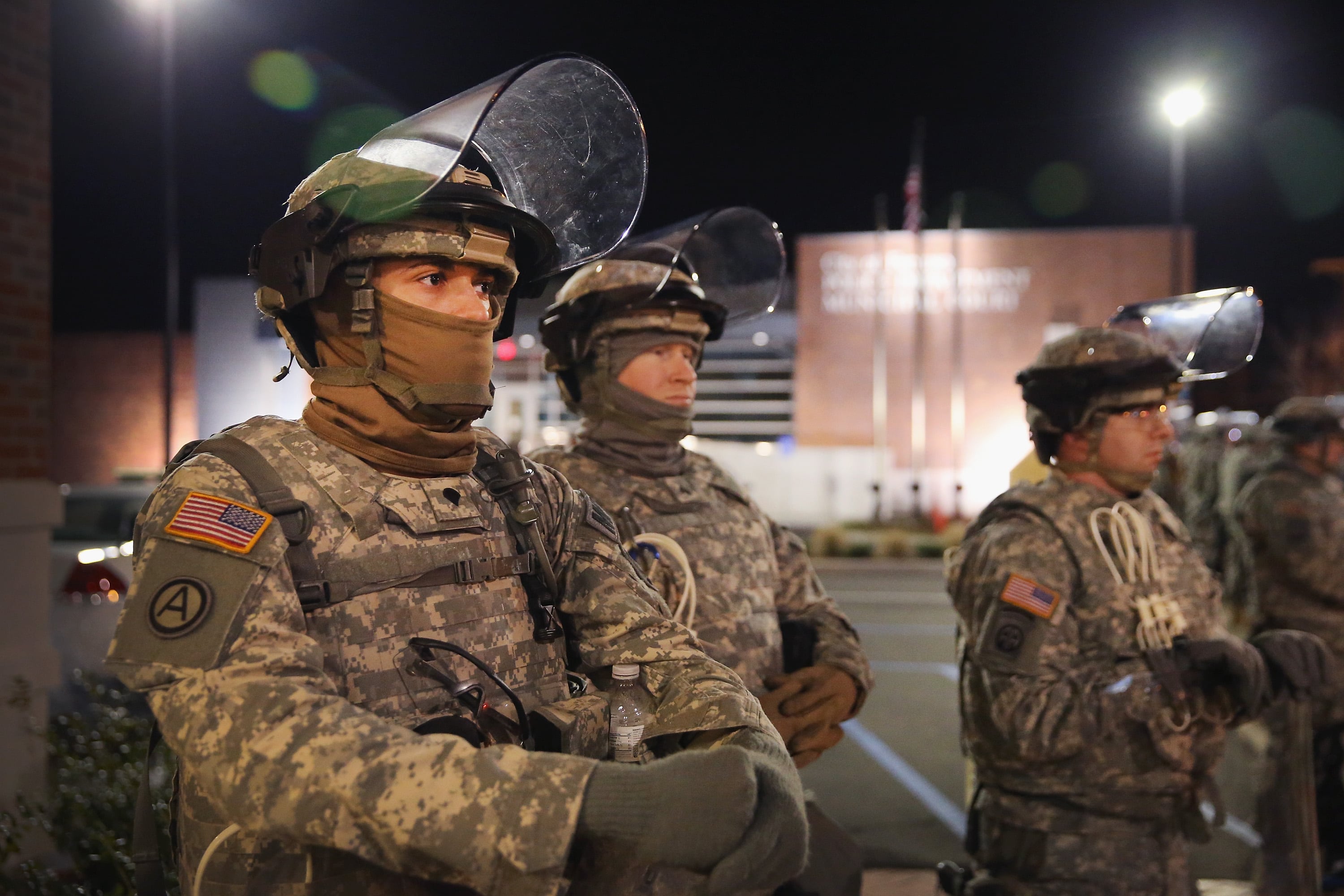Amid improving conditions in and around Ferguson, Missouri, the National Guard will scale back operations in the St. Louis area, Gov. Jay Nixon announced.
The prepared statement said that as of 1 p.m. on Tuesday, 1,268 Gguardsmen remained in the St. Louis region. Nixon said "the Guard has completed its duties within the City of St. Louis, and has begun to systematically reduce its presence in St. Louis County."
Nixon had ordered 2,200 Gguardsmen to Ferguson the day after protests and destructive riots broke out over the Nov. 24 announcement that police officer Darren Wilson would not be indicted in the shooting of Michael Brown. Authorities arrested more than 60 people in Ferguson and at least another 20 in St. Louis. , and a At least 12 buildings were burned that first night.
In the week since, the chaos has abated somewhat. The governor credited the Guard for its "professionalism, bravery and dedication."

Soldiers with the Missouri National Guard stand guard Nov. 25 outside the Ferguson police station.
Photo Credit: Scott Olson/Getty Images
Nixon had activated the Guard the week before the County prosecutor's announcement that a grand jury had declined to indict Wilson.
Despite wide predictions of unrest, the National Guard primarily guarded a number of sites outside of Ferguson, generating some criticism. Photos from Nov. 25 do show National Guardsmen members in riot gear lined up outside the Ferguson Police Department.
The Ggovernor's office and Missouri National Guard have released little information regarding the Guard's involvement and other efforts to promote public safety since the unrest began, largely limiting itself to a few public statements. Ferguson Police Chief Tom Jackson was unable to get answers as to why the Guard was not called in sooner, according to the Fox affiliate in St. Louis. He also said there would have been less "destruction" had the Guard been called before the protests began.
As he announced the decision last week, prosecutor Robert McCulloch said witnesses' stories claiming excessive force was used did not match physical evidence as well as Wilson's testimony, in which he said he needed to shoot Brown to defend himself.
Grand juries typically present a low bar for prosecutors to get an indictment. Some criticized McCulloch's office for cross-examining witnesses while doing little to question Wilson's version critically. The case has become a rallying cry for alleged unequal racial treatment in the criminal justice system. Broader questions about accountability for officers using disproportionate force in general have also been raised.
The racial tensions in particular have exploded into demonstrations nationwide.




